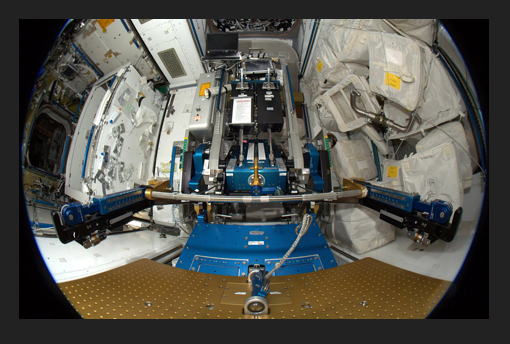
As astronauts spend more and more time in space, their bodies degenerate. Gravity doesn't exist as it does on earth, and so there isn't the same amount of resistance from weights. During space flight, astronauts experience a force of gravity one-millionth as strong as we experience on earth. In such conditions, a benchpress or Bowflex would be little more than a prop with which to record some amazing YouTube videos.
With nothing to simulate the resistance of free weights, an astronaut could lose muscle mass and bone density. found that after a six-month stay in space, astronauts lost 15 percent of the mass and 25 percent of the strength in their calves. It's for that reason that NASA spent a lot of time and money creating a fancy machine complete with sensors, pistons, cables, computers, balancing devices, and lots of high grade metal. They named it the Advanced Resistance Exercise Device, or aRED for short. Astronauts simply call it “.”
Vacuum cylinders allow it to mimic free weights, and different settings allow astronauts to reconfigure the machine to to do any one of 29 exercises—from dead lifts to curls. They have the potential to push their limits—the max setting for bar exercises is equal to 600 pounds on earth. The aRed was set up in the Space Station in 2009, and offered double the max resistance of the previous exercise machine.
Astronaut Scott Kelly demonstrates how “The Beast” works in the . If he looks familiar, that's because he's the twin brother of Mark Kelly, the husband of .
For more on “The Beast,” check out this recent post by astronaut .
—Joe Spring